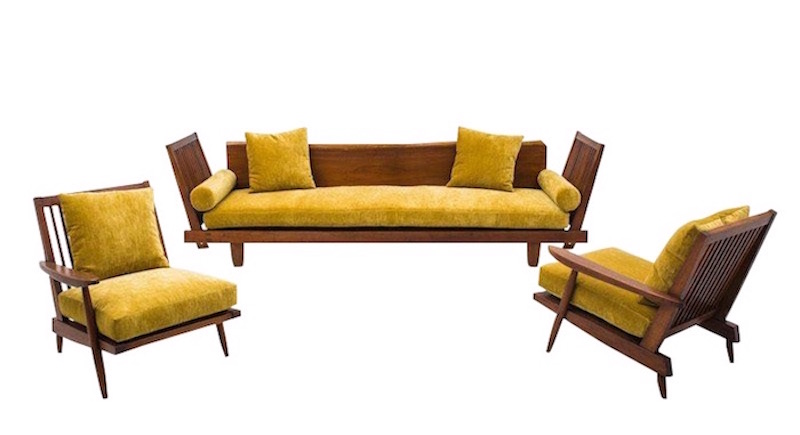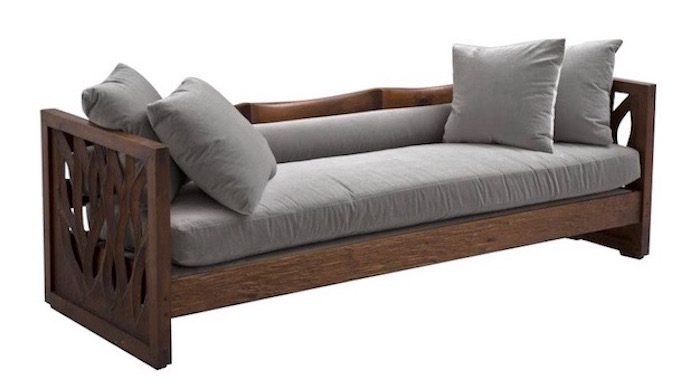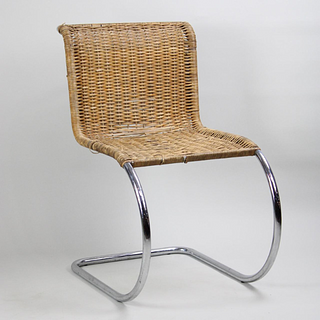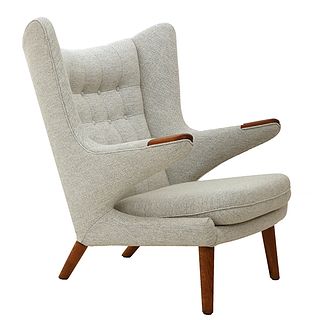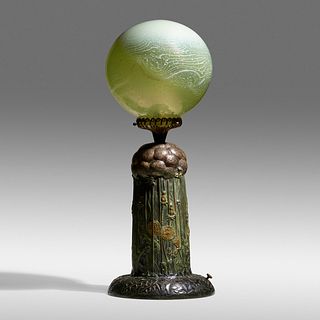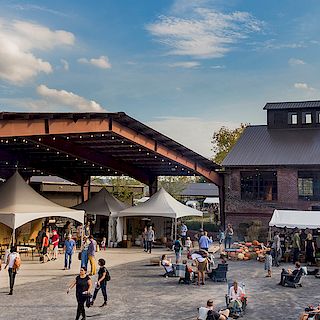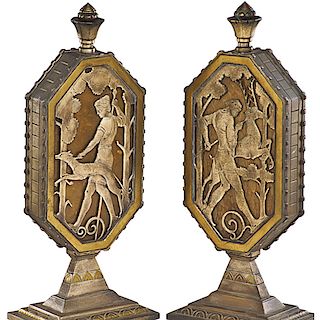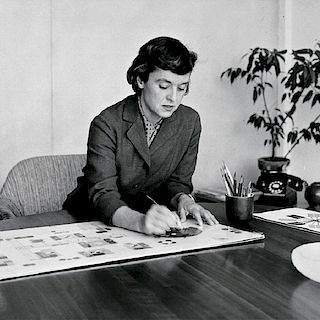Functional Design: Q&A with Todd Merrill
A sudden burst of sunlight moved through the massive showroom windows on the corner of Lafayette and White street as an ancient celestial prediction, covering modern ruins with angular shadows, develops all things caught in its natural path.
Lot 4, George Nakashima, Unique Suite of Black Walnut Furniture including Sofa and Pair of Low Chairs, USA, 1952, Estimate $150,000-175,000
Striking against mustard yellow cushions and forming a comb like separation of light, the sun revealed the extreme tranquility and wisdom contained within the furnishings of George Nakashima. In Todd Merrills Tribeca gallery, Todd Merrill Studio, there are rarities and stories silently waiting to be discussed. The unique suite of black walnut, including a sofa and pair of low chairs from 1952 by George Nakashima, of which the chairs may be the first of their kind, elevated my senses surrounding the majesty and intrigue of functional design.
To better understand the highly sculptural, "functional" designs featured in Todd Merrill Studios first Bidsquare sale, Aquetong Road: New Hope, PA 1950s - 1970s, we reached out to him for insights surrounding the 20th-century artisans whom he so passionately represents.

Todd Merrill of Todd Merrill Studio; Renowned dealer of 20th-21st century design in New York City
BSQ: You’re a third generation antiques dealer. How old were you when you realized that you had an interest in the family business?
TM: I was brought up surrounded by the antiques business. My grandparents, Nathan and Margaret Merrill, began collecting and selling American Furniture and Folk Art in the 1930s. By 1970 (when I was a kid) their house, their antiques business and huge converted dairy barns were filled to the rafters. In 1968, my parents went into the auction business. Our weekends were spent on old New England estates, often having the same families residing in them for the past 100-200 years, accumulating layers of everything imaginable. Those places were my playgrounds and where my imagination and interest in both history and art developed. Conversations at our family dining table were a constant discussion of discovery, valuation and the antiques business. I thought all five-year-olds could recognize the difference between a Chippendale chair from a Sheraton or Hepplewhite chair - it was that deep!
BSQ: This will be the first time you’ve hosted a sale on Bidsquare. Why Bidsquare and what was it about the platform that struck your interest?
TM: Bidsquare was first brought to my attention by David Rago, whom I respect immensely. Based on Bidsquares expertise and the quality of its auction audience, I felt that it was the ideal platform for me to feature this curated catalog. In addition to its ease of use, given its popularity with private collectors and dealers, specifically in 20th-century design, choosing Bidsquare was an easy decision.
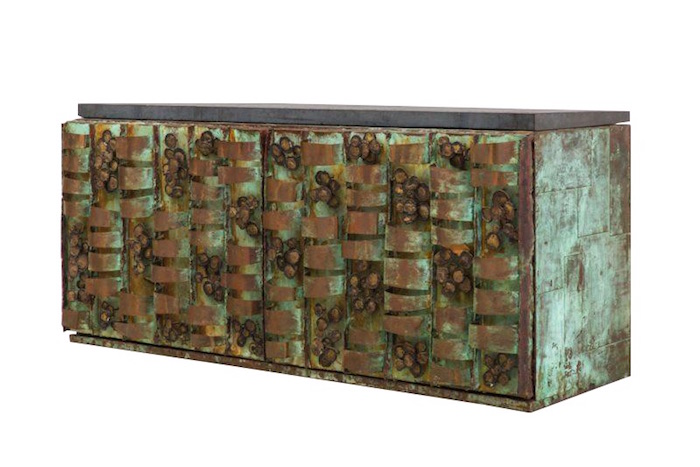
Lot 23, Paul Evans, Verdigris Copper Loop Hanging Console, USA, c.1965; Estimate $90,000 - $100,000
BSQ: There is a unique, previously unknown, George Nakashima suite featured in this catalog. I understand you have an interesting story behind it’s authentication involving George’s wife Marion…
TM: The suite had been tucked away on an island in Maine for 50 years unseen and forgotten. When I showed it to Mira Nakashima she could not believe it existed. Nothing like it had been made or seen by her. Some of their early records were missing and it became touchy to authenticate without the original studio records. After a few weeks of searching she came back with very good news - that the sofa had been documented in her mother’s ledger. Mira then issued a full statement of authenticity for this rare Nakashima sofa. We have the ledger entries as well as family documentation for the group.
BSQ: This catalog is dominated by designs from Paul Evans ranging from 1960s - 1980s. The aesthetic changed quite a bit over the years. Do you find that collectors of his work stick to one time period?
TM: There are collectors for all genres of Paul Evans oeuvre. Early studio designs continued to be produced in the 1970s and Directional designs could be custom ordered. The variety of Evans work continues to amaze and excite me as new pieces emerge from their original owners. Some collectors tend to gravitate toward early work and others the Directional designs but when they find something exceptional they do cross-over.
All of the case pieces offered in our Bidsquare catalog are A list collectors pieces. The form of the Sculpted Bronze Console (Lot 22) might be the best Ive ever seen. The coloration of the Forged-Steel Console (Lot 11) is outstanding and the size is easy to live with and The Copper Loop Console (Lot 23) is unusual as very few wall-mounted consoles exist, if at all.
Lot 2, Phillip Lloyd Powell, Silvered Walnut Mirrored Screen, USA, c. 1960s, Estimate $35,000-45,000
BSQ: The American studio artisans blurred the lines between furniture design and art. Some pieces, like those by Paul Evans, elevated it to the sphere of functional sculpture. Do you consider yourself more of a furniture dealer or an art dealer? Or, are the two notions inseparable?
TM: I gravitated toward the American studio artisans of the late 20th-century like Evans, Powell, Nakashima, Castle, Blunk and Kagan because their work is so infused with artistic intent. Many of their designs don’t appear to be functional, however, that aspect is secondary to their visual impact. This category and its 21st-century counterpart provides a wonderful grey area between art and design, making the pieces highly collectible and difficult to imitate. I sell art in its strict definition; paintings, photography and sculpture as well as “functional” design. The most exciting design pieces are not easily categorized and make you really think about what your looking at. Many designs pose a serious discussion about what design vs art is and where those boundaries lie - that’s still exciting and new territory.
BSQ: If you weren’t in the antiques business, what would you say your second passion is? Can you see yourself doing anything else?
TM: If not design/art then it would have to be architecture for me - the three are inseparable. I dont have a real estate license but if I ever got one, I would pursue buying, renovating and flipping period houses and/or artistically designed ones.
Lot 1, Phillip Lloyd Powell, Sculpted Walnut Three-Seat Sofa, USA, c. 1960s; Estimate $25,000 - $30,000
BSQ: What is your favorite possession?
TM: I dont have a favorite possession. I grew up in a family obsessed with the material world so, part of becoming a dealer was to focus on letting go of things - I buy it, possess it and sell it. I love it but I can let it go. Although, I do not like to think of them as possessions, my dogs are my favorite.
BSQ: Favorite moment or a highlight of your career? (so far!)
TM: There are many moments that have been special in my career. However, in relation to this sale, I recently produced and directed a documentary with my wife Lauren for the Michener and Cranbrook Museums’ 2015 exhibition on Paul Evans entitled Paul Evans from High Craft to High Glam. The documentary brought collectors like Adam Lindamen and Lenny Kravitz together as well as bringing all of the living artisans and studio workers who contributed to the Paul Evans Studio together. In particular, we interviewed Robert "cool" Thompson Sr., who had disappeared for decades after he left the studio in 1970. Bobby Cool, as he was known, is an African American who worked as an assistant at the impressionist studio of Edward Redfield before Evan’s snagged him as his assistant. Bobby painted on Evans’ work with Evans and came up with the signature color palette that was seen in the studio work until 1970. In the film, Bobby explains how they would drive along the countryside and gather inspiration from the natural world, such as opened fields. During production, Bobby was reunited with Dorsey Redding, who he had worked closely with at the Paul Evans Studio for a decade, but had not seen in over 40 years. It was an emotional moment that confirmed my innate feelings about Evans’ work and Paul Evans as a human being. The intention was always art - it was a way to make a living but his art and how he treated his employees and clients mattered more than anything. This may explain why he ended a three decade, successful career broke. Evans’ work fell into obscurity but as with all great art, was rediscovered. Its popularity has now grown far greater than it ever was in his lifetime with great pieces regularly bringing in six figures at auction.
Click here to view the full, Aquetong Road: New Hope, PA 1950s - 1970s, Timed Auction from January 9th - 23rd.
Dont have a Bidsquare account? Sign up here!

Jessica Helen Weinberg | Senior Content Editor at Bidsquare
Be in the know about upcoming auctions and exciting post-sale results by following us on Facebook and Instagram.
- Quilts as a 2025 Design Trend: A Celebration of American Heritage and Craftsmanship
- A Celebration of Sports History and Collectibles
- Antiques and the Arts Weekly Q&A: Allis Ghim
- The Thrill of Sports Memorabilia Auctions: A Collector’s Paradise
- Demystifying Coin Condition: A Guide to the Sheldon Grading Scale
- Snoopy & Friends: A “Peanuts” Auction at Revere
- Colorful Chinese Monochromes at Millea Bros
- 12 Holiday Gifts for the “Impossible to Buy For” on Bidsquare
- Alluring Art Objects and Accessories from the Estate of Chara Schreyer
- Kimball Sterling's One-Owner Outsider and Folk Art Collection Showcases Masters of the Unconventional



 EUR
EUR CAD
CAD AUD
AUD GBP
GBP MXN
MXN HKD
HKD CNY
CNY MYR
MYR SEK
SEK SGD
SGD CHF
CHF THB
THB